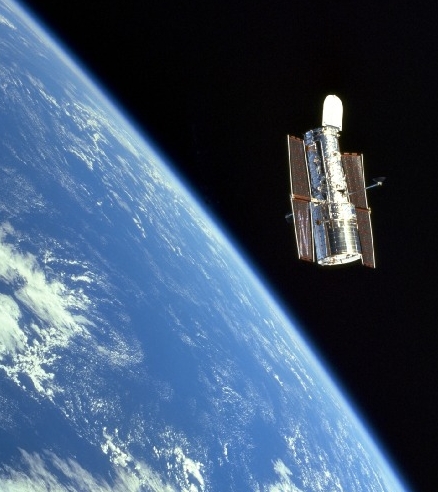| About Me | My Work | My Interests | Curriculum Vitae |
My Research

|
Ph.D. Thesis Project
At UC Berkeley I worked with Professor Marc Davis. My research involved measuring the distances to a sample of galaxies with cz < 550 km/s, predicted to be in directions of large quadrapole in-fall. Determination of the local velocity field is strongly dependent on the accuracy and precision of distance determinations. Most galaxies in the local Universe are dwarfs and generally devoid of Cepheid Variables. Much less precise distance indicators were therefore necessarily used in past attempts at local flow measurements. We have used the technique of measuring the discontinuity in the luminosity function at the tip of the red giant branch (TRGB). This TRGB method has a solid empirical calibration, with precision comparable to Cepheids but far more efficient in observing time and more flexible in target selection. The TRGB method allows us to determine accurate and precise distances to any resolved galaxy with an old, metal-poor stellar population.Our first paper on this work, entitled Deviations from the Local Hubble Flow. I. The Tip of the Red Giant Branch as a Distance Indicator, was published in the Astronomical Journal (2002AJ....124..213M). The following links point to the paper in various formats:
For those interested here are links to my photometry (in binary FITS tables) for the galaxies discussed in Paper I as well as the IDL code used to determine the TRGB:
| Images from the December 1997 and January 2002 observing runs at Keck Observatory | |||||||||||
|---|---|---|---|---|---|---|---|---|---|---|---|
|
Images from the Hubble Space Telescope (Program #8199) | ||||||||||
 |
|
Past Research
- For the summer of 1997 I was a Summer Intern at NASA's Goddard Space Flight Center in Greenbelt, Maryland. I worked with Dr. David Leisawitz on a near-infrared study of several HII regions in the Galaxy. He obtained near-infrared data of these regions in J, H, and K bands and was attempting photometric analysis to determine the characteristics of the stellar populations embedded in the HII regions. For the most part I wrote IDL codes to reduce the near-infrared data and made false color mosaics of the data. I also did some legwork in the preliminary photometry

A false color composite of the HII region Cepheus A - For Summer 1996 I was a Summer Student at the Space Telescope Science Institute. I worked with Dr. David Soderblom and Dr. Todd Henry on a project to study the nature of stars in the solar neighborhood out to a radius of about 10 parsecs. Todd Henry is part of a research group called RECONS (Research Consortium on Nearby Stars), among their findings is the discovery of the new 20th nearest star. Dr. Soderblom's work is concerned with studying Chromospheric activity in nearby stars and using that information to get an estimate of stellar ages. The team of Soderblom and Henry provided a list of stars to be used as targets for SETI (the Search for Extraterrestrial Intelligence). My involvement was in the reduction of recent CTIO data for several hundred stars that were Identified, in Dr. Soderblom and Henry's last study of southern solar neigborhood stars, as having either very High or Low levels of Chromospheric Activity.
- I did my senior thesis on Precision CCD Astrometry at the University of Michigan with Professor Patrick Seitzer. It was a project to study the ability to do astrometry with CCD (Charge Couple Device) detectors. We demonstrated 1 milliarcsecond stellar measuring prescision and 2 milliarcsecond prescision with galaxies. We used CCD data from telescopes at MDM, KPNO, and the Hubble Space Telescope. Of interest to us was whether or not proper motions of globular clusters could be determined using modern CCD data and CCD data taken in the 1980's. Professor Seitzer had such data of globular clusters Palomar 3 and Palomar 15.
- Also at U of M I did theoretical research with Professor Douglas Richstone. We were studying whether or not contraints could be placed on Omega0 (the cosmological density parameter) by galaxy cluster density profiles. We examined simulated galactic clusters over a grid of cosmologies to determine the cosmological influences on the density profile. Unfortunately I never got to see this project all the way through, as I graduated from UofM.















